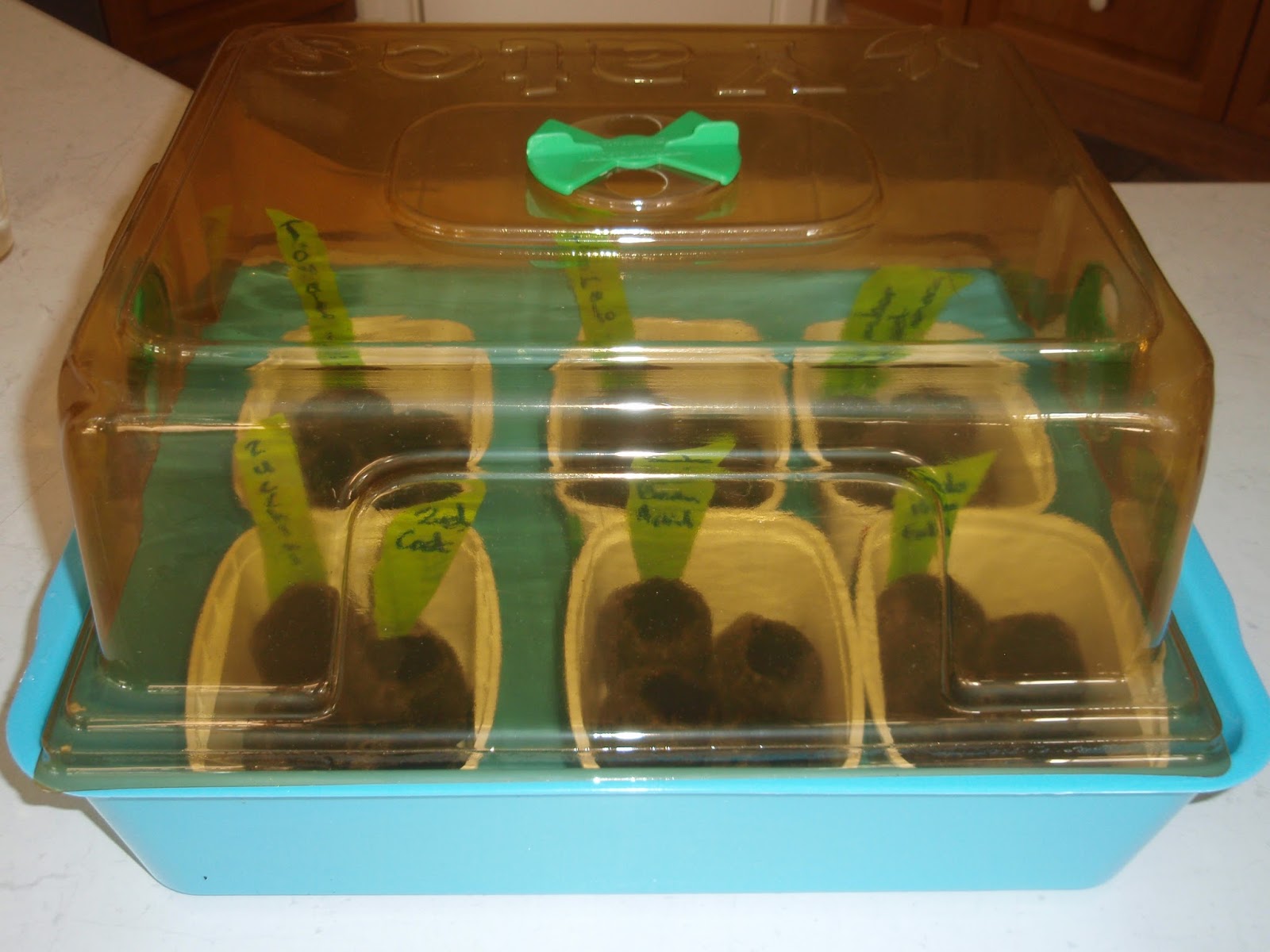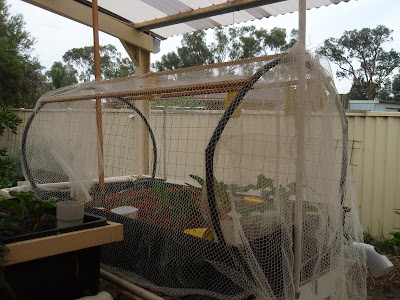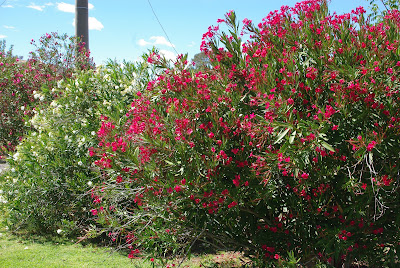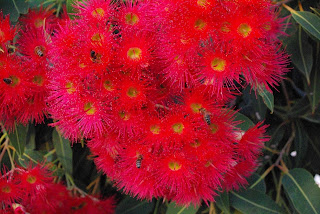Last year I had great success with seeds sown in Jiffy pots so I've just done it again. These funny little blocks of compressed cocopeat expand to many times their size when placed in water. The seeds are pushed into the top of the pot, where there is a natural dimple. I used an orange stick (as found in packs of emery boards) to deepen the holes a little for larger seeds, and then pushed the damp peat over the seeds with the orange stick.
A major problem with seeds sown indoors or in a hothouse is damping off of the tiny seedlings. When I was a beginner at this gardening game, I lost a lot of seedlings this way, until I developed a seed-planting strategy that has worked successfully ever since.
Whether using peat pots or seed-raising medium, I soak the medium in room-temperature chamomile tea made with boiled water. Chamomile is mildly anti-fungal. All equipment must be scrupulously clean, no leftover soil particles from the last time you used the propagator or pots.
The pots or punnets containing the seeds are placed in a clean cat litter tray and covered with a plastic cover until the seeds germinate. This time, I used margarine containers inside the tray to separate pots of different vegie seeds. All subsequent watering is with room-temperature boiled water and every second watering I use chamomile tea again. I tip the water/tea into the bottom of the tray or margarine container so it soaks gradually upwards into the medium.
Once the seeds have germinated, those pots or punnets are take out of the propagator and put into a tray without a lid, but are still kept inside until they are growing strongly, about the four-leaf stage. Then they are gradually put outside in a sheltered spot for longer and longer periods. Once they go outside, the medium must be kept damp so check every day, or several times a day if the weather is hot. At this stage, I water my seedlings every few days with a weak solution of seaweed emulsion, which is both a tonic and anti-fungal.
For many years I varied this and put the punnets into a polystyrene box covered with a sheet of plastic, which I put outside near a north-facing stone wall. Now I prefer to keep the pots inside to begin with as it makes it easier for me to check progress regularly, without having to go out in the cold/rain/wind.
I've made a late start (first week in September) with seed planting this year, but will still have plants ready to go in the ground by late October, by which time the soil should be warm enough so the plants get off to a good start. With the Jiffy pots you avoid the possibility of set-backs because of transplant shock, as the whole pot is planted into the soil.
I should stress that this method is used for seeds sown indoors or in any other warm moist environment that favours fungal growth. When sowing at other times of year, or straight into the soil, there is no need for this fussiness.

































.JPG)
.JPG)

















